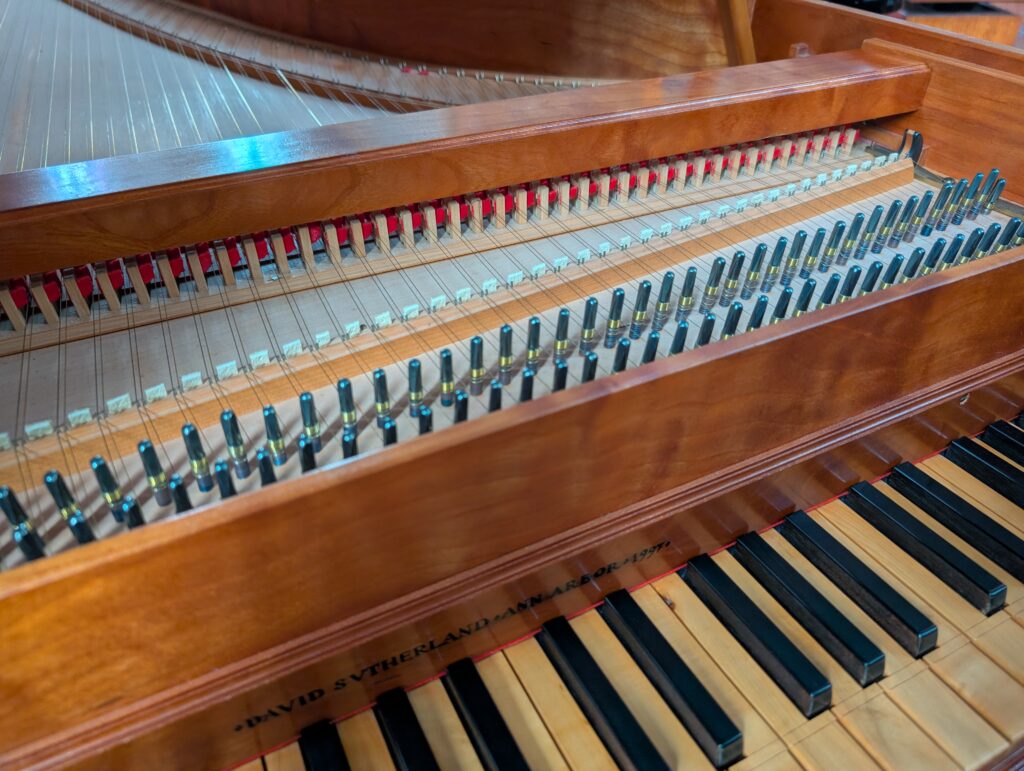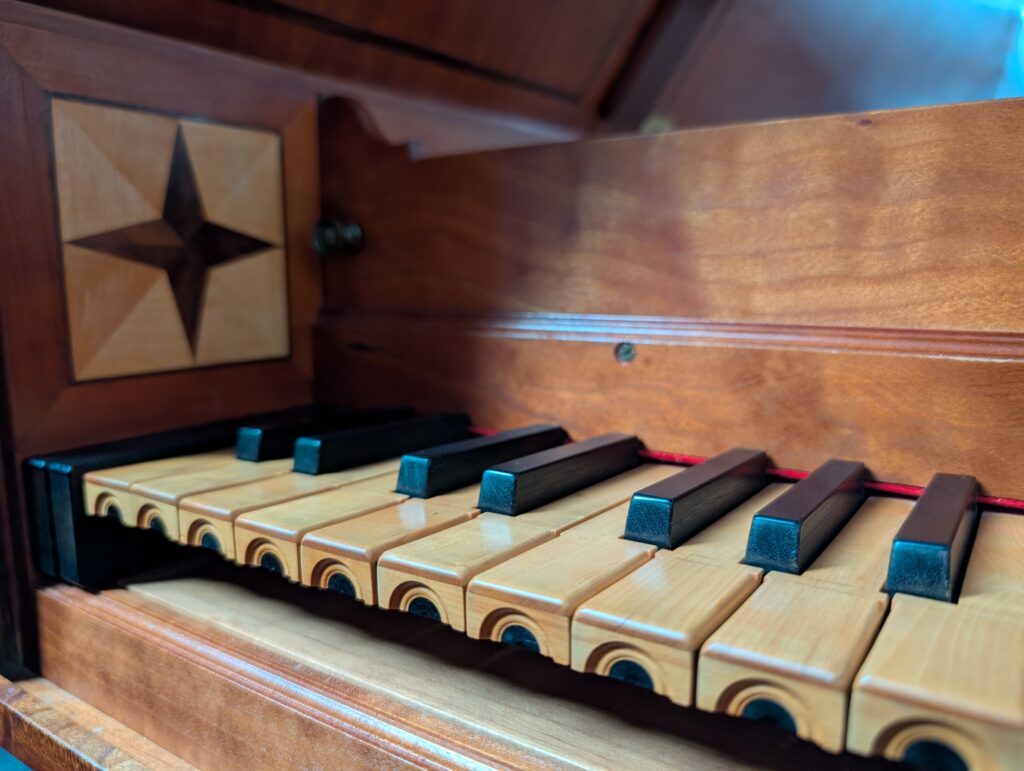This instrument is an Italian-style single-manual harpsichord built in Ann Arbor, Michigan, by David Sutherland in 1997, for Helen Skuggedal Reed of Evansville. With any harpsichord, regardless of size, shape, or nationality, the strings are plucked by plectra that rise up past the string, plucking on the way. The plectra are mounted on thin pieces of wood called jacks, which sit on the ends of the keys. This is in contrast to the piano, in which strings are struck by hammers.
Local musician, and the Vanderburgh County Librarian from 1976 until her death, Helen Reed commissioned this one manual, Italian-style harpsichord in 1997 from David Sutherland, who was for many years the curator of harpsichords and early instruments at the University of Michigan, Ann Arbor.


During his career, Sutherland maintained an active workshop and was commissioned to build many styles of early keyboard instruments including virginals, clavichords, one and two manual harpsichords in both Italian and French style.
The harpsichord is made in cherry wood and is a copy of an Italian instrument from c.1685 at the University of Michigan, Ann Arbor. The soundboard is Italian cypress and the sharps are rosewood.
It has two sets of strings played from the same keyboard. One set (the “Back 8”) has a more mellow sound than the other (the “Front 8”). They can be played separately or together via levers on each side of the keyboard. The Back 8 can utilize a mute, also called the Buff, which softens the sound considerably and imitates the sound of a plucked guitar or lute.
The keyboard can be moved one string to the left to enable performance at Baroque pitch a’=415 Hz.
The harpsichord is currently tuned in an unequal temperament, Werkmeister III, a’=440 Hz.
First Presbyterian purchased the instrument from the estate of Helen Skuggedal Reed (1949-2017).
